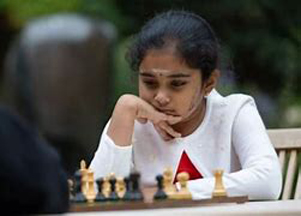
The three-day annual Shaheedi Sabha (Jor Mela) was held in the sacred memory of Guru Gobind Singh’s two younger sons- Zorawar Singh and Fateh Singh, who were buried, alive in a brick wall here. The sabha began with the commencement of an Akhand Path of Sri Guru Granth Sahib at Gurdwara Jyoti Swarup.
Despite cold weather, on the first day, thousands of the devotees paid their homage to the great martyrs Baba Zorawar Singh, Baba Fateh Singh and their grand mother Mata Gujri at Gurudwara Thanda Burj, where they were prisoned, Gurdwara Fatehgarh Sahib – the place of their martyrdom and Gurdwara Jyoti Saroop where they were cremated.
They also took holy dip in the holy tanks of the Gurdwaras. The first day of Shaheedi Sabha was observed purely in religious spirits. Dewans were organized in all Gurdwaras. Langars (community kitchens) have been established by the devotees. SGPC has arranged a Deewan where the Sikh preachers, Ragis, Dhadi Jathas will continue to sing devotional songs and give the accounts of Sikh history, and infuse ‘Beer Rus’.
The first day of Jor Mela was celebrated in all religious spirits; there were exhibitions of paintings of the past times and the belongings of the historical individuals.
The second day of the Sabha used to have rallies and meetings by the political parties. The political leaders have stopped; they do not want to interrupt the peaceful tribute to heavenly.
The third day of the Jor Mela saw a Nagar Kirtan, also known as the religious procession, all across the city or the nearby areas of the gurdwara. This procession started from Gurdwara Fatehgarh Sahib to the Gurdwara Jyoti Sarup, and it has a beautifully decorated palki in the middle around which the devotees, the followers and the visitors walk and sing religious songs and poems.
There is a Guru Ka Langar held at the Sabha, here the villagers’ pool grains, mil, vegetables and fruits for the devotees and organized food for them. It is said that the wealthy and the poor, all come together to organize this langar and help the visitors.
Sahibzaadas and their supreme sacrifice
By Dr Jagdeep Kaur Kahlon
During the month of December, the global Sikh community commemorates the martyrdom of the four youngest Martyrs in human history.
However, it is very shocking to observe that many Sikhs are busy in celebration and festivities instead of paying homage to the Martyrs.
The youngest hero of humankind, Sahibzada Fateh Singh ji (1699-1705) who was the youngest of Guru Gobind Singh’s four sons, Sahibzada Zorawar Singh ji (1696-1705) his older brother and Mata Gujar Kaur ji, their grandmother sacrificed their lives for their freedom of faith.
Sahibzadas Baba Fateh Singh ji & Baba Zoravar Singh ji, snuggle in the warm embrace of their loving grandmother Mata Gujri ji.
They were held captive in the roofless-tower (Thanda Burj) in the freezing extremities of December, but their strong willpower was evident on their radiant faces, as they showed no signs of any pain or regret at their undaunted decision to uphold the Spirit of Sikhi. The true innocence and infinite purity of these noble souls was visible on their faces.
Gurdwara Fatehgarh Sahib, situated 5 km north of Sirhind stands as the sad but motivating reminder of the Supreme Sacrifice to uphold human dignity and freedom. This is the site of the execution of the two younger sons of Guru Gobind Singh at the behest of the evil-minded cruel Wazir Khan of Kunjpura, the faujdar of Sirhind. Baba Fateh Singh ji and Baba Zorawar Singh ji set a precedent in Sikh history and perhaps in world history by becoming the youngest known martyrs to sacrifice their lives for ethical values.
On 26 December, 1705, Baba Fateh Singh ji was cruelly and ruthlessly martyred at Sirhind along with his elder brother, Baba Zorawar Singh ji. He is probably the youngest recorded martyr in history who knowingly and consciously laid down his life at the very tender age of 6 years.
It is really so very mind-boggling to understand how children of such young age had the infinite fortitude and value to overcome the temptation of remaining alive and to live a lavishly luxurious and comfortable life of royalty because they were offered all of this, by the Mughals, if they abandoned their faith. They were also given the threats of facing a brutal, painful and tragic death entombed within a wall of bricks and mortar, if they refused to accept the offers.
The young and old salute the supreme sacrifice of the little child heroes, who outright rejected to walk on the easy and cozy path of a life of peace and because their divine mission and purpose of life was to uphold the principles of God who gave freedom and liberty to every soul to live as per one’s own choice and liking. So, the brave young Sahibzaadas bore the brunt of tyranny and endured the intense pain of a torturous physical death. They continue to live an eternal life, as they are immortalized.





Be the first to comment